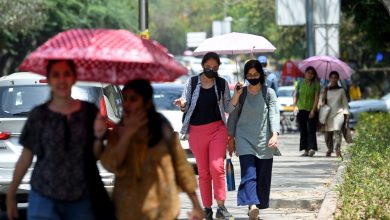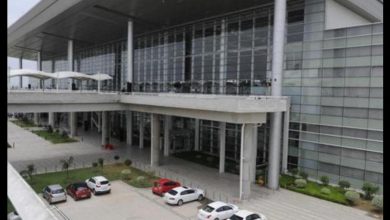In Bhopal, Zamarul Mahal bustled with Holi revelry

BHOPAL: Taj Mahal palace and Ahmedabad palace were the preferred destinations for Holi celeberations during Nawabi era in Bhopal.
“City’s Taj Mahal palace is synonymous with cascading waters reflecting an artistic temperament for the palace compound with temples, mosques and serais. Little do people know that ‘Zamarul Mahal’ the middle portion of Taj Mahal, was the hub of Holi celeberations,” said heritage conservationist and historian SM Hussain.
Forget massive entrance gate dome is the second biggest of palaces in the country. Hussain describes the inside. The sandstone, bricks, woods, corrugated sheets among others, Zamarul Mahal still survives. “People remember the place as ‘Sawan Bhadon Saehan’. Fitted with highly ornamental water architecture and still functioning terracotta and copper pipelines are sealed in its roof, it was the destination for Holi celebration,” he said.
Over the years, MP tourism and state department of archaeology have tried and failed to restore Zamarul Mahal to its glory. The palace was built for Nawab Shah Jahan begum built between 1871 and 1884.
Holi celebrations were a great exhibition of Ganga-Jamuna tehzeeb in the city of lakes. Towards the end of the Nawab era, Hamidullah Khan’s Holi celeberations was one of the most looked-forward-to events of the year in Bhopal.
In his book ‘The Home Coming’ author Mohammed Amin Zubairi describes a Holi celeberation after Nawab Hamidullah was accepted as ruler of Bhopal by the British of 1926.
Zubairi describes the ‘Holi-Durbar’celebrated with joy and festivity that took place at the Ahmedabad palace. ‘His Highness, respecting the sentiments of the vast section, celebrated this (Holi) festival and held a durbar. Some 150 castes were represented and a crowd of some 3,000 assembled in front of the palace. When His Highness had taken his seat, each representative came forward and presented a customary nazar and sprinkled scented saffron-coloured water upon His Highness’s white dress. His Highness took delight in reciprocating this custom upon others and requested one of his officials to sprinkle the water on his behalf over the assembled gathering. After the functions were over, a grand garden party was given to guests,” wrote Zubairi.
He was one of the few people to accompany the last Nawab on his trip to England after Sultan Jahan’s eldest son Nasrullah Khan’s death in September 1924. The Begum realised that Delhi’s British secretariat and the viceroy had decided in May that year to back Nasrullah’s son Habibullah as the heir to Bhopal’s throne. But it was the Begum’s desire that her youngest son, Hamidullah Khan be the next ruler of Bhopal, who was the chief secretary and loyally handled the affairs of the state.
Nawab Sultan Jahan Begum immediately left for London to meet King George V and Queen Mary at Buckingham Palace regarding the succession issue. She reminded the King that the British monarchy had always sustained women rulers in Bhopal. Hamidullah was declared the heir apparent on May 25, 1925. He took over the reins on June 9, 1926 and brought an end to the four generation of Nawab Begum’s rule in Bhopal.






